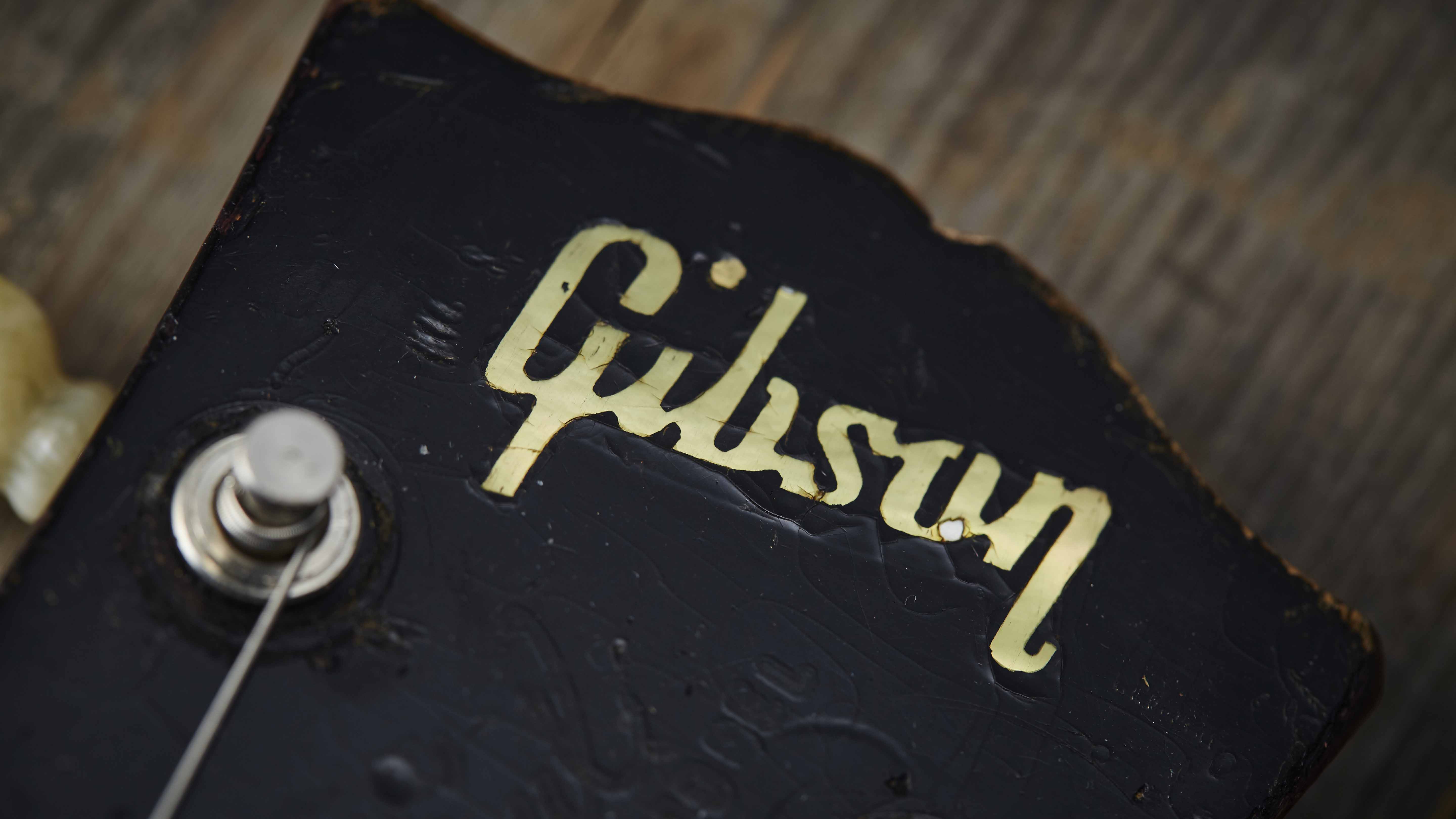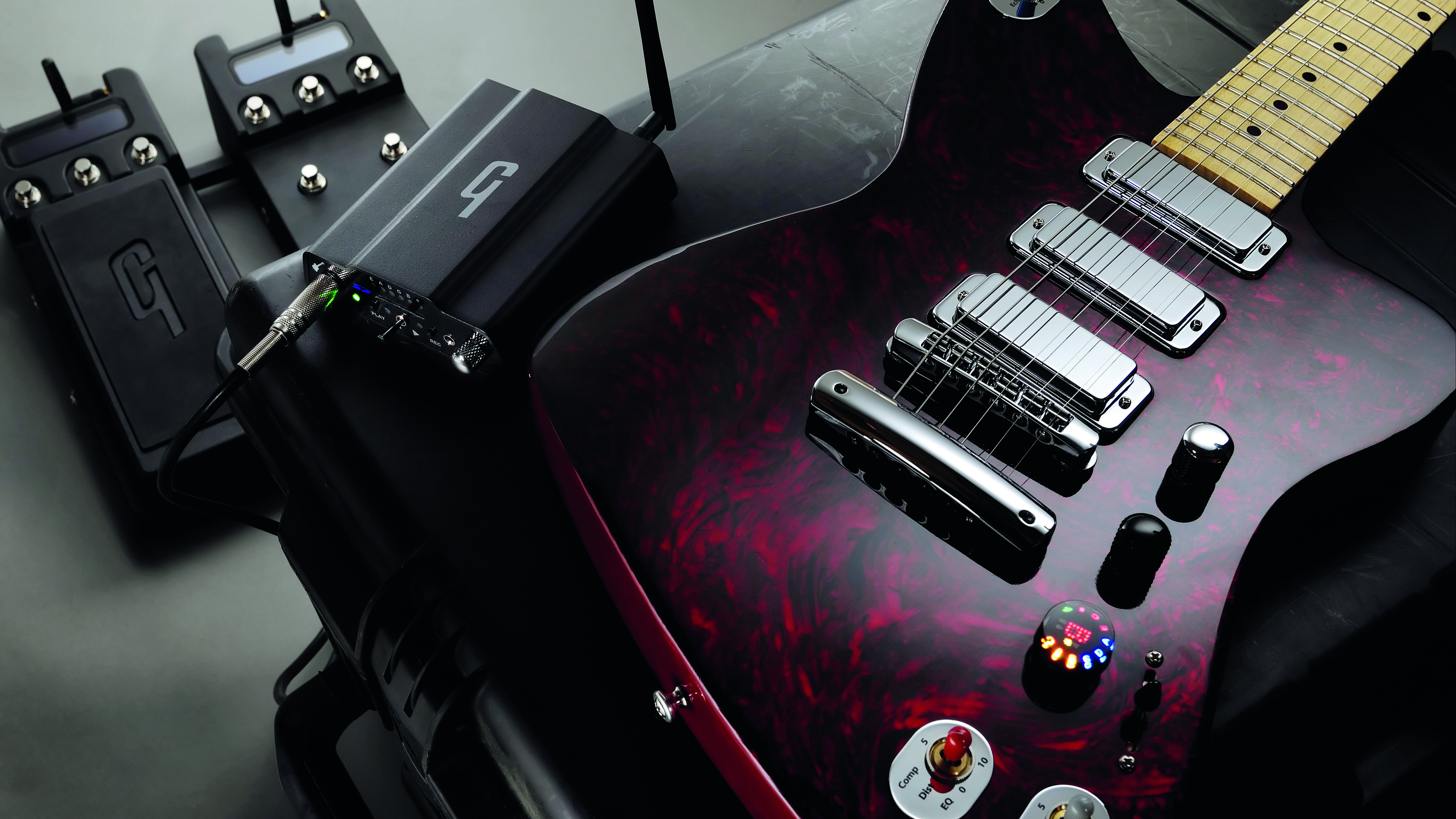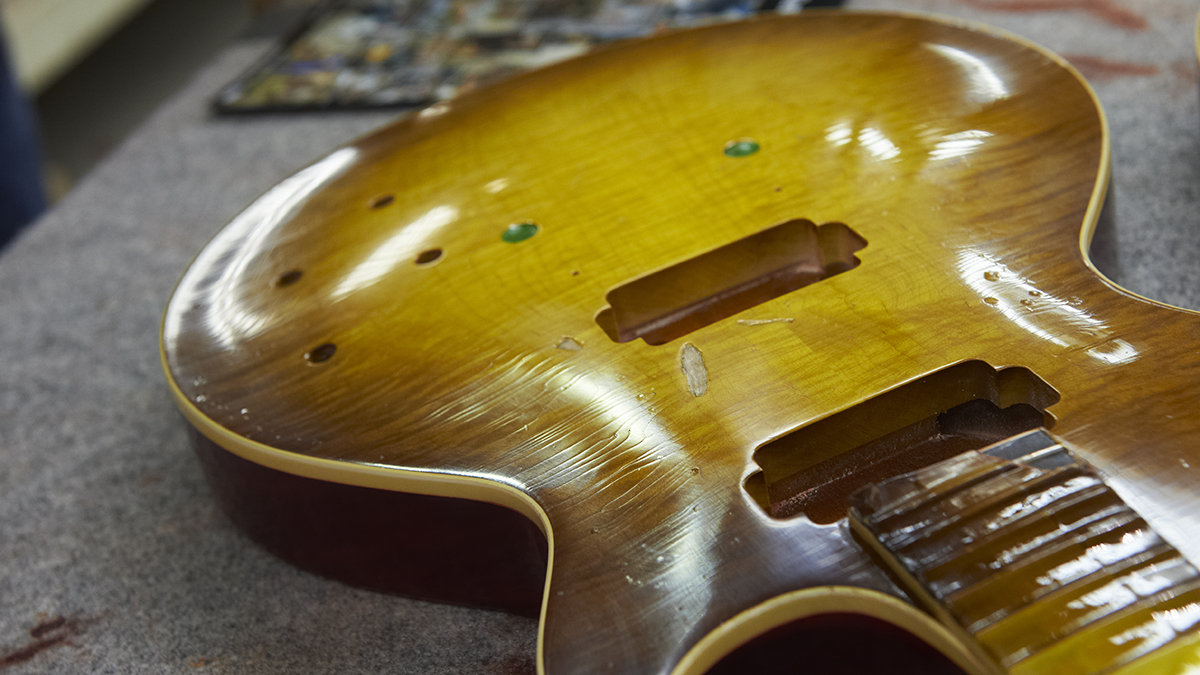Gibson: how did we get here?
Charting the troubled guitar giant's decline and how it can rise once more

Back in happier times, when you typed ‘Gibson Guitars’ into a search engine, the results would ring out like the triumphant proclamations of a royal trumpeter. You know the sort of thing.
There’d be headlines like ‘Billionth Les Paul sold!’ There’d be a photo of Zakk Wylde pretending to bite a best-selling signature model, or perhaps a Hendrix-owned Flying V hovering above the salad bar at the Hard Rock Café. Life, it seemed, was pretty peachy for the world’s most-iconic-but-one guitar brand.
But lately, checking in on Gibson’s fortunes is liable to make you wince. Now, the lead stories make Kremlin statements on UK-Russian relations seem upbeat, and Justin Bieber’s life look blissful and incident-free.
Unfathomable debt. Craftsmen frogmarched out of workshops. Assets flogged. Debtors circling. And that’s before you even log into the gear forums, where a sea of disembodied voices hiss that the Gibson product is in a tailspin, that they wouldn’t even knock in a tent peg with a Boogie Van Les Paul.
With that kind of mythology to draw on, the Gibson brand seemed peerless, bulletproof, unassailable… we’d always assumed the Nashville giant was too big to fail
Guitar companies die. That’s just market economics. Anyone who’s been to a guitar trade show will have seen the rickety camping tables, hidden away at the arse-end of Warehouse Z, manned by two broken-looking businesspeople, touting a derivative Strat copy that you wouldn’t play on a desert island. It’s sad, but like finding a baby bird with a broken wing, you’ve just got to keep walking and let natural selection do the rest.
But that could never happen to Gibson, right? Not Gibson. Not them. As we know, there’s not enough room on the web to illustrate just how important this builder is to the evolution of both the craft and the culture. Eric Clapton on Bluesbreakers. Angus Young on Back In Black. Jimmy Page on Whole Lotta Love. Steve Jones on Never Mind The Bollocks. The Les Paul. The SG. The ES-335. The Flying V. The PAF. We’ll stop now.
The point is: with that kind of mythology to draw on, the Gibson brand seemed peerless, bulletproof, unassailable, to the point where a splintered lolly stick bearing that inimitable golden logo would have us pressed up against the guitar shop window like a kid at a sweet shop. Quite simply, we’d always assumed the Nashville giant was too big to fail. But that’s probably what they said about the Titanic.
Want all the hottest music and gear news, reviews, deals, features and more, direct to your inbox? Sign up here.
We’re not saying it’s time to run for the lifeboats. But in the same month that hallowed British music institution NME goes to the great shredder in the sky, there’s a terrifying sense that in the internet age, there’s no sacred cow that can’t be packed off to the abattoir and turned into offal.
What went wrong?
Judging from what we’ve heard so far, there are only really two problems at Gibson. The trouble is, they’re both pretty major ones: the guitars and the finances. Rightly or wrongly, there’s a school of thought that Gibson’s latter-day products have missed the mark, thanks to a spurt of post-millennial envelope-pushing from CEO Henry Juszkiewicz, who bought the company back in 1986.
“Kids today may think some music from the ’50s is kind of cool here and there,” he reasoned in a recent interview with Billboard, “but what other industry do you know that hasn't changed since the '50s?
“Those guitars from the ’50s are what the purists want, but we have to have something new and exciting,” he continued.
“Imagine if the camera had never changed. Innovation is a part of every business to some degree, but [the guitar industry] hates it. The kids demand it, and if you don't have it, they walk.”
Juszkiewicz has been as good as his word. Alongside detours into electronics and consumer audio, the Gibson axes themselves have grown into markedly fiddlier beasts than the classics that Zakk Wylde once noted were as gloriously simple as a “fuckin’ clothes dryer”.

In 2006, we met the snappily named HD.6X-Pro Digital Guitar, which let players route each individual string to a separate amp and effects chain (which seemed like overkill, unless you were Def Leppard recording Hysteria).
A year later, pub battle lines were drawn over the auto-tuning Robot Guitars, while in 2008, the Chameleon Tone Technology invited the fury of PAF anoraks with its spectrum of different pickup tones, all accessed by a twist of the control knob. The technological death-march was epitomised by the Firebird X, which had storage for 55 tones, shipped with two pedals, featured Bluetooth connectivity and a G-Node modular transmitter that let you hook up to the Gibson app store via USB and download patch tones. We’d come a long way from ‘The Log’.
You had to respect Gibson for trying to forge ahead in a notoriously backward-looking industry
You had to respect Gibson for trying to forge ahead in a notoriously backward-looking industry. But veteran Guitarist reviewer Simon Bradley echoed the concerns of many in his review of the three-grand-plus Firebird X, noting that “such is the look, its inherently complex nature, not to mention the lack of genuine customer-friendly information, this guitar is in danger of being considered an instant white elephant”. He added, darkly: “Gibson is doing little to silence the legions of fans wondering why this iconic brand doesn’t just stick to making the dribblesome Les Pauls, SGs, 335s et al, to which the vast majority of guitarists aspire.”
Progress will always split opinion. More troubling were the apocryphal accusations that the Nashville firm is struggling to even do the basics, its quality control dipping amidst mismanagement and high turnover. Of course, any opinion dredged from the darkest corners of the web is to be taken with a pinch of salt: it’s feasible that every venomous forum post was written by the same attention-seeking keyboard warrior with an axe to grind.
But last year, perhaps the most damning soundbite of all came from Mastodon’s Bill Kelliher, who recounted the saga surrounding his Gibson signature model and defection to ESP. “[Gibson] kept fucking up my guitars that I was asking for,” he told Ultimate Guitar. “I didn’t ask for a lot. I just had a few certain things that I would like with my guitar - I told them I didn’t want it chambered and they made my second guitar chambered.
“All the guys I worked with over there,” Kelliher continued, “the A&R guys were getting fired left and right and the company just seemed to be falling apart to me. There were new guys who would come in and they didn’t know shit. Gibson just wasn’t… I don’t know, I think they’re on their way downhill, honestly.”
Whether or not the Gibson product is truly in decline is endlessly debatable and ultimately subjective. Whether a box-fresh Les Paul pales next to a ’59 Burst is down to you and your A/B box (and this review suggests the newer models still have plenty of merits).
It’s also not worth us weighing in on the theory that Gibson has a fractious relationship with some of its brick-and-mortar retailers (“I've been called someone that hates retailers, and I don't,” insisted Juszkiewicz this year. “We make a real effort in making sure our retailers make a good profit off of our product.”)
Big bill blues
What’s beyond doubt is that the firm’s balance sheet does not make cheerful reading. Two years ago, Moody’s Investors Service downgraded Gibson’s credit rating and noted that the outlook was “negative”, citing concerns “about the company’s ability to meet all of its financial obligations in 2016 and 2017”. Elephantine individual debts were cited, including “$80 million due to a consumer electronics supplier”.
Fast-forward to present day, and the financial reality looks bleaker, with Gibson reported to have $375 million in senior bond debt, with an additional $145 million due should that first figure not be repaid by the summer (really puts that tenner you’re owed by the drummer into perspective, doesn’t it?).
Last month, Standard & Poor’s also downgraded the firm, noting that “with multiple maturities looming and operating weakness ongoing, we believe Nashville-based Gibson Brands could default on its debt obligations over the next six months”. To add insult to injury, S&P added: “We are lowering our corporate credit rating to CCC- from CCC.”

A series of acquisitions throughout the 2010s - including the likes of hi-fi brand Onkyo, recording co TASCAM and consumer electronics giant Philips - sought to diversify Gibson Brands’ income, but judging from their current financial situation, it didn’t solve their problems.
Those kind of numbers are going to take their toll. Belts have been tightened. Fat has been trimmed. Warehouses and factories - including Gibson’s Memphis facility - have already been sold off. In February, the Nashville Post reported that Gibson had laid off over 15 staff from the city’s Custom Shop. With Juszkiewicz talking of “a spring cleaning of sorts”, the Cakewalk music software has been sold to BandLab. But will it be enough? Will anything?
Juszkiewicz doesn’t appear to be sweating it, and Gibson’s February statement didn’t sound ruffled, stressing that it has met all “current obligations to the bondholders, is in the process of arranging a new credit facility to replace the bonds, and fully expects the bonds to be refinanced in the ordinary course of business.”
Can Gibson turn things around? History would suggest so
Still, it’s said that debtors and bondholders may take control of Gibson. And it’s unlikely that those guys are going to be much cop at winding pickups and finishing necks.
Can Gibson turn things around? History would suggest so. Founded in 1902, this venerable firm has a habit of bouncing back from the ropes, of kicking the lid off the coffin.
Let us not forget that the flagship Les Paul model was dead in the water in the early-’60s, until it was resurrected by the patronage of Clapton, Keith Richards and Mike Bloomfield.

And perhaps we should have a little more faith in Juszkiewicz. When he took over in 1986, after all, Gibson sales were limping below $10 million after a period of management by the Norlin conglomerate. But by 1993, the firm’s wholesale shipments had rocketed to an estimated $70 million, prompting a New York Times article that spoke glowingly of Juszkiewicz “saving Gibson Guitars from the musical scrapheap”.
That was one hell of a comeback. But it’s a tougher retail environment out there now, acknowledged by the CEO in that same Billboard interview.
“When the stock market collapsed [in 2008], almost all retail across the board fell 30%; not just the guitar sector of that, although I will admit that the guitar business still hasn't fully recovered yet. The musical instrument industry as a whole hasn't recovered; it’s getting there, but it’s still not at the same level as where it was before.”
How to save Gibson
We are not economists or management consultants. But on a conceptual level, there would seem to be ways for Gibson to climb out of this mire.
1. Cut the product line back to the bone. Banish anything that doesn’t have strings. The Gibson portfolio has over 100 brands including – deep breath – Slingerland, Maestro, Baldwin, Hamilton, Chickering, Wurlitzer, KRK Systems, TASCAM, Cerwin-Vega!, Stanton, Onkyo, Integra and TEAC. It’s like a restaurant that serves curry, pizza, sushi and burgers, but keeps messing up your order. Some of this stuff has to go.
Please, for the sake of all that is sweet and good in rock ‘n’ roll, do something. Because the notion of Gibson not existing is just unthinkable
2. When it comes to the guitars, stop gilding the lily. Concentrate on the core models that made your legend, then build them to time-honoured specifications and sky-high standards. Beg the Custom Shop staffers to come back and give them a pay rise.
3. Get your house in order. Draw a line in the sand, move on, and hopefully, in ten years’ time, all this will be waved away by champagne-popping shareholders as “that little post-millennial wobble”.
4. But please, for the sake of all that is sweet and good in rock ‘n’ roll, do something. Because the notion of Gibson not existing is just unthinkable, like there being no Rolling Stones or Abbey Road. Imagine the cherished half-century tussle between Gibson and Fender becoming a tedious one-horse race. Imagine ownership of a genuine Les Paul becoming limited to the elite circle of hedge-fund managers who can afford the dwindling stock of originals. Imagine Slash playing a Stratocaster...
That’s not a world that anyone wants to live in. So get well soon, Gibson. The guitar world needs you…